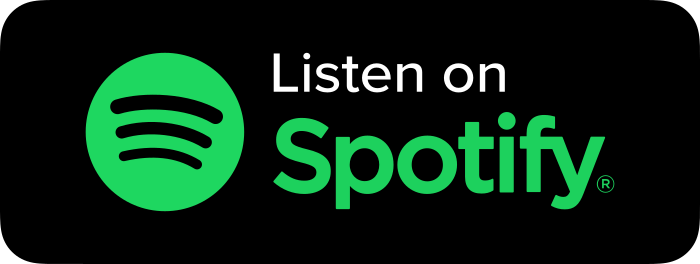Where AI Fits Into Your Beverage Data Models by Jonathan Hooten of ParadYm Data
Episode Overview
Chris interviews Jonathan Hooten (Hootie), founder of ParadYm Data, an expert in beverage data with 25+ years of experience. They discuss the fundamentals of beverage data, including depletions and sales data, emphasizing their importance for understanding the market and forecasting.
If you are looking to leverage data and AI to transform your business operations, connect with Jonathan Hooten by heading over to the website paradymdata.com
-Music Credit-
Neon Drive by Punch Deck | www.soundcloud.com/punch-deck
Music promoted by | www.free-stock-music.com
Unlocking Growth: How Data and AI are Revolutionizing the Beverage Industry
The beverage industry, from craft breweries to global spirits, is undergoing a profound transformation, driven by the increasing availability of data and the rise of artificial intelligence. Gone are the days of purely relationship-based selling; today's market demands fact-based decisions fueled by deep insights.
In a recent podcast, Chris interviewed Jonathan Hooten, popularly known as "Hootie," the founder of Paradym Data and a veteran with over 25 years of experience in the spirits, wine, and beer space. Their discussion peeled back the layers of beverage data, revealing how companies can leverage it for growth and where AI fits into this evolving landscape. The Fundamentals: Depletions vs. Sales Data
At its core, beverage data revolves around two critical components:
Depletion Data: This tracks products moving from the distributor to the retailer (the "back door").
Sales Data (e.g., Circana/Nielsen IQ): This measures products sold from the retailer to the consumer (the "front door").
Understanding both streams is fundamental for accurate forecasting and navigating market trends. As Hootie emphasizes, it's much more important to know where you're going than to know where you're from. But you do need to know where you're from in order to make some changes or tweaks going forward.
The Evolution of Data Transparency
Historically, retailers were hesitant to share data, limiting access to select category partners. However, this has shifted significantly. Increased transparency fosters stronger partnerships between manufacturers and retailers, leading to more informed decisions on category management and shelf optimization.
Today's consumers are "omni shoppers," purchasing across various channels – brick-and-mortar stores, online, and specialized retailers. This complex buying behavior necessitates more sophisticated data analysis to piece together the complete market story.
Key Metrics for Craft Brewers
For craft brewers looking to gain a competitive edge, Hootie recommends focusing on several key data metrics:
Segments and Styles: What categories and types of beverages are performing well?
Size: Are consumers preferring tall boys, 12-packs, or bottles?
Price and Promotion: Understanding the impact of discounts and everyday low pricing strategies.
It's crucial to differentiate between strategy and tactics. While a strategy aims to "win market share," tactics are the specific actions—like pricing and promotions—used to achieve that goal.
From "So What?" to Actionable Insights
A common pitfall is "so what data"—information that offers little guidance. The real value lies in actionable data insights that provide clear steps for improvement. Hootie recounts a powerful example from his time at Mike's Hard Lemonade. Despite industry belief that Super Bowl weekend was prime for deep promotions, data suggested a stronger sales lift after the event. By strategically offering a smaller discount during the Super Bowl and a larger one the following week, they achieved a remarkable 38% sales increase, challenging conventional wisdom with data-driven results.
Beyond sales, data analysis is vital for:
Production Forecasting: Accurately predicting demand to optimize supply chain and avoid overstocking or stockouts, especially critical for products with shorter shelf life.
Marketing Optimization: Leveraging loyalty program data to identify consumer purchasing patterns. For instance, if data shows consumers buying a particular beer also frequently purchase Pringles, a cross-promotion offering a discount on Pringles with the beer can be highly effective and targeted marketing.
The Role of AI in Beverage Data
The sheer volume and complexity of modern data make AI an indispensable tool. Paradigm Data has developed closed AI models (BevLitics.ai, 420Litics.ai, CPGLitics.ai) that operate within a secure, proprietary environment, ensuring data privacy and preventing bias.
These AI models excel at:
Time Savings: Rapidly analyzing vast datasets to extract insights that would take human analysts hours or even weeks.
Unbiased Analysis: Providing objective comparisons between brands and markets without the influence of human preconceptions.
Explaining AI (XAI): Allowing users to question the AI's reasoning and understand the data points that led to its conclusions.
While AI significantly augments human capabilities, Hootie firmly believes it won't replace analysts. Instead, it will empower them to focus on critical thinking, strategic planning, and creative problem-solving. AI will streamline the data gathering and initial analysis, enabling businesses to move faster and make more informed decisions.
For businesses looking to leverage data and AI to transform their operations, understanding these principles is the first step toward unlocking significant growth and efficiency.
Don't miss the full conversation! Listen to the "Where AI Fits Into Your Beverage Data Models" episode on the Get Hoptimized Podcast on Apple Podcasts and Spotify, or watch on our YouTube channel.




